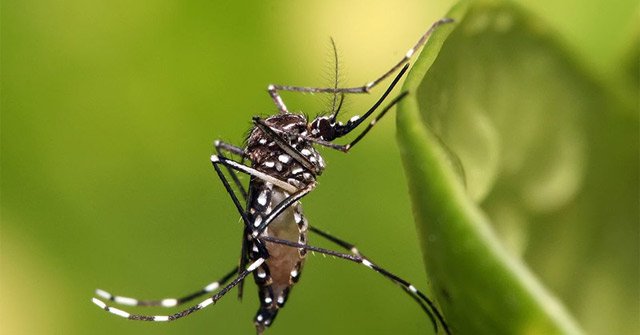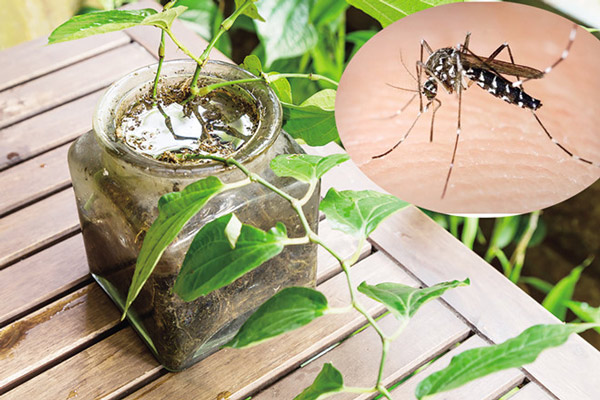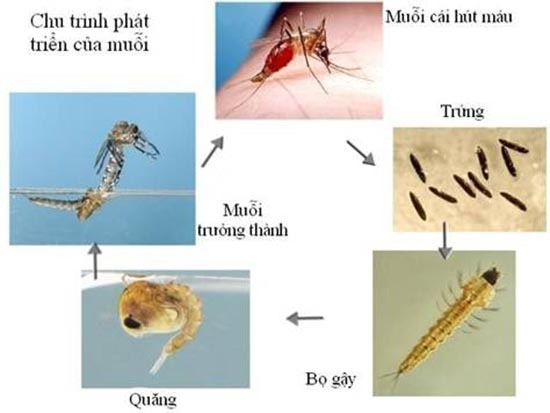Identify blood-sucking Aedes mosquitoes that transmit dengue fever to humans
We all know that Aedes zebra mosquito is an intermediary that transmits dengue to humans. But not everyone knows how to distinguish Aedes midges from normal ones. The following article will help you identify the characteristics of this mosquito.
Aedes zebra mosquito has the ability to carry dengue virus dengue. They spread the virus from person to person through burning and sucking blood.
Aedes aegypti mosquito identification characteristics according to documents of the Preventive Medicine Department, Ministry of Health.
- Aedes aegypti mosquito is black.
- The legs, body and abdomen have a pronounced black and white cavity.
- The chest region has white scales lined up.
 Identify blood-sucking Aedes mosquitoes that transmit dengue fever to humans Picture 1
Identify blood-sucking Aedes mosquitoes that transmit dengue fever to humans Picture 1
Characteristics of midges
Zebra mosquitoes often hide in humid places, dark corners of the house, perched on blankets, utensils, clothing . bottles, casks, water tanks, jars, jars, tree hollows, vases .
Female mosquitoes fly very quickly, when they find the bait they immediately rush to bite and suck blood. They stick to the bait very tough, only when they suck blood to fly away. Female mosquitoes are often active during the day, especially early in the morning and late afternoon.
 Identify blood-sucking Aedes mosquitoes that transmit dengue fever to humans Picture 2
Identify blood-sucking Aedes mosquitoes that transmit dengue fever to humans Picture 2
The midges can barely function as blood-sucking prey when the ambient temperature is above 23 degrees Celsius. Therefore, the zebra mosquito thrives in the rainy season, where the average monthly temperature is above 20 degrees Celsius.
During their lifetime, the average female mosquito lays 5 times, dozens of eggs each time. Mosquito eggs can live for months, withstand very dry conditions and hatch when exposed to water.
The development cycle of Aedes midges:
- The time from laying eggs to developing larvae is on average 7 days.
- Time to develop from adult larvae to 2 to 3 days.
- Female mosquitoes that feed on human blood can live for 20-40 days.
 Identify blood-sucking Aedes mosquitoes that transmit dengue fever to humans Picture 3
Identify blood-sucking Aedes mosquitoes that transmit dengue fever to humans Picture 3
The best way to prevent dengue fever is to prevent the development of midges and prevent them from being bitten. To prevent the proliferation of midges, you can refer to the article 'Dengue outbreaks, do you know how to prevent them?'.
- How to identify the signs of dengue fever
- 3 simple ways to effectively prevent dengue fever
You should read it
- How to recognize signs of dengue
- What color clothes are most susceptible to mosquito bites?
- Foods to supplement for dengue
- Dengue fever outbreak, you know how to prevent it?
- 3 simple ways to effectively prevent dengue
- World Health Organization warns: Marburg - dengue virus is rare, horrible as Ebola re-exported
- How to prevent and treat dengue fever
- The Pentagon successfully developed a laser that identifies the object through the heartbeat
- Close up of the life and death moments of wild animals
- 20 animals are so strange that you don't believe they exist on Earth (part 1)
- Scientists read the bird's brain and know what it is about to sing
- Alibaba's AI identifies Covid-19 infections with an accuracy of 96%
May be interested

9 unique snakes in the world

The most beautiful butterflies in the world

Admire the magic of nature through the best photos at the Wildlife Photography Contest 2019

The familiar human foods that dogs eat and cannot eat

Fighting for partners can help animals adapt better when their living environment becomes harsh

The 5 reasons why killer whales are 'cold-blooded' geniuses of the ocean






 Scientists are about to teach mosquitoes without human blood
Scientists are about to teach mosquitoes without human blood Dengue fever outbreak, you know how to prevent it?
Dengue fever outbreak, you know how to prevent it? What color clothes are most susceptible to mosquito bites?
What color clothes are most susceptible to mosquito bites? How real is the blood-sucking monster on the Earth scary?
How real is the blood-sucking monster on the Earth scary? How to prevent and treat dengue fever
How to prevent and treat dengue fever How to recognize signs of dengue
How to recognize signs of dengue